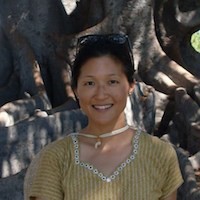Katie Loncke and Dawn Haney of Buddhist Peace Fellowship, based in Berkeley, California, came to Tassajara Zen Mountain Center in Carmel Valley, California this summer and gave a two-day talk on how to incorporate Buddhist practice with social justice.
Katie is a half-black and half-European, Jewish person. Dawn is white.
The talk was about an hour and a half long, and it was an active discussion—the audience participated reciprocally which made the talk less tedious and interesting.
Katie and Dawn moderated the discussion skillfully, and controversial topics—such as racial discrimination, the myth of the American dream, income inequality and meritocracy—were raised.
A blind spot or shadow in Buddhist communities is to keep harmony and ignore subtle but blatant inequities or immoral actions. It is common for people to escape to Buddhist communities from their previous lives due to relationship, family or financial problems.
Spiritual bypassing is a way to condone inequities or injustices, such as racial discrimination, by saying, “It’s all empty” or “We are all one.”
How does that account for criminal law, education and politics statistics showing the exact opposite?
Some key points for Buddhist activism were:
- Focus on systems, not just individuals.
- Spiritual knowledge is not a substitute for political education.
- Anti-oppression moves us beyond tolerance or comfort, with diversity toward active redistribution of power.
- Confrontation can be compassionate.
- Now is the time for direct action and pre-figurative politics.
Katie gave an example of how this theory was put into practice when she helped coordinate a protest in front of the police station in Oakland. This was a protest to criticize the decision to not indict the white police officer who shot and killed Michael Brown, the young unarmed black man in Ferguson, Missouri last August.
In this protest, the black protesters were on the sidewalks and other areas, so that they could not be arrested—while white and Asian allies were blocking the traffic where they could potentially be arrested. This sent the message that the black people were law-abiding citizens, and that the white and Asian allies were willing to break the law, at the gross injustice of this country’s legal system, to minimize the importance of Michael Brown’s life. This was a peaceful protest with no arrests or chaos.
I admired the strategy and wisdom used to make this happen. Katie and Dawn were young 20-something-year-olds, and they had optimistic energy and the ability to analyze the circumstances realistically. They emphasized that we should work with mudita—sympathetic joy, part of the Brahmavihara, or sublime attitudes or virtues—to prevent anger and burn-out in working against the face of injustice.
Katie and Dawn gave me hope that positive change can happen, and it can be done in a compassionate, non-violent way.
I will now reveal my unconscious, implicit racial bias—by revealing that I was doubtful that Dawn, a white female, could possibly understand the injustice, when she was not a minority herself.
And then I realized, even though she didn’t experience the injustice first-hand, she could still support the cause to alleviate the inequities caused by discrimination.
Anyone—no matter what race, religion or gender—deserves my respect if they are willing to dedicate their work, time and energy, in taking a stand against injustice.
.
Relephant:
Do Bodhisattvas get Angry? A Response to the Killing of Eric Garner.
Occupy Sravasti: How Buddhism Inspires Me to Occupy.
.
Author: Stephanie Lee
Editor: Yoli Ramazzina
Photo: Flickr/Hartwig HKD







Read 0 comments and reply